Last year we spoke to Antony Choice, Director and Soft Tissue Therapist at Myogen, about the why, what and how of maintaining your posture and addressing that pesky back pain. We hope that you find the article useful as we continue to work between our homes and the office.
Why is posture important?
Well, as humans, the way we hold our body in position determines how effectively and efficiently our body will move in space. As we are dynamic beings, built to move, we are not so good at being in one position for any length of time. Even when we sleep, we move around a lot, and some move around more than others. Ask any parent whose child crawls into bed with them at some stage during the night. Bed karate is definitely a thing!
As such, spending a big chunk of your day sitting at a desk is not ideal for the way our bodies are structured. It is well researched that the act of sitting is a huge contributing factor to a vast number of conditions that cause significant pain and discomfort to many individuals.
What is the most common issue you see at Myogen?
The most common issue we see in our clinic is lower back pain. However; hip pain, thoracic tightness, peripheral nerve pain down the legs and arms, neck pain and headaches are all symptoms that are also, often caused by poor postural habits.
What can we do while sitting at our desks to maintain a healthy posture?
When sitting, sound posture doesn’t need to be complicated. Use these three simple cues; etch them into your brain or write them down on a sticky note and attach it to your computer or somewhere it is always in sight. Keep in mind that they will need to be repeated regularly throughout the day.
Neutral pelvic tilt.
Your pelvis is your base of support so having a sound base is extremely important. To get a comfortable position that you can sustain simply sit up straight and rock your hips back and forth until you sit in a position that you have a slight curve in your lumbar spine.
This means your lumbar vertebrae are all stacked nicely on top of each other and will be in the strongest possible position. This also ensures the surrounding muscles are in the best position to work effectively. This position will be different for everyone, so it’s just wherever you are comfortable.
Sternum (middle of the chest) slightly up towards the ceiling.
You don’t have to push your sternum heavily out in front of you, just subtly up towards the ceiling. This will ensure your shoulders come back into a nice position so they allow nice neural flow down the arms.
If the shoulders tilt forward, over time, this can cause aggravation the neural system which can lead to all sorts of irritating signs and symptoms including pins and needles, burning sensations, and numbness amongst others.
Pretend someone is pulling the hair on your head (if you have any) toward the ceiling.
This will ensure your neck is in a neutral position and take the pressure away from anterior neck muscles and prevent extension load going through your cervical spine which is a very common cause of pain and can lead to development of a Dowagers Hump which isn’t ideal.
Example of poor posture – slouching.
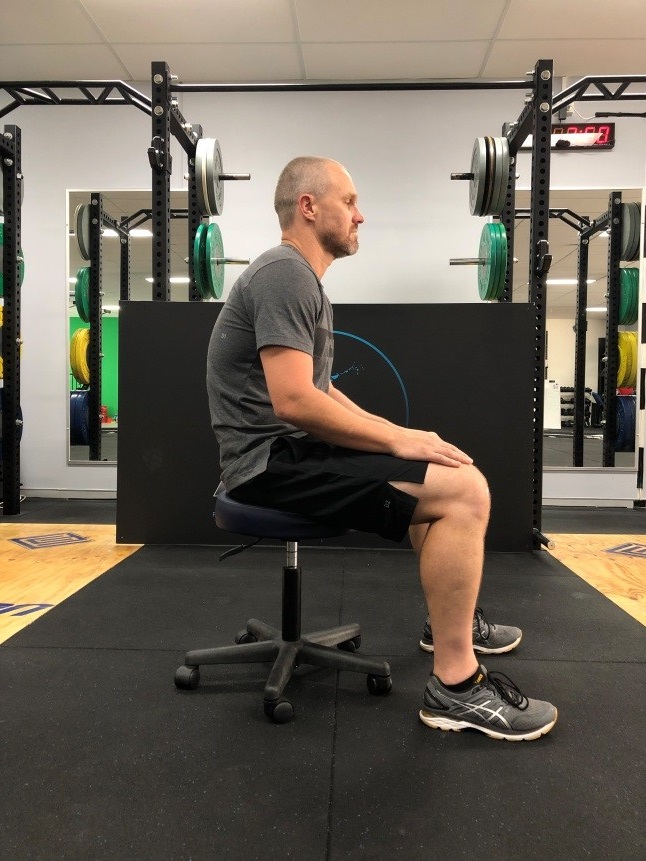
Example of good posture – following 3 tips.
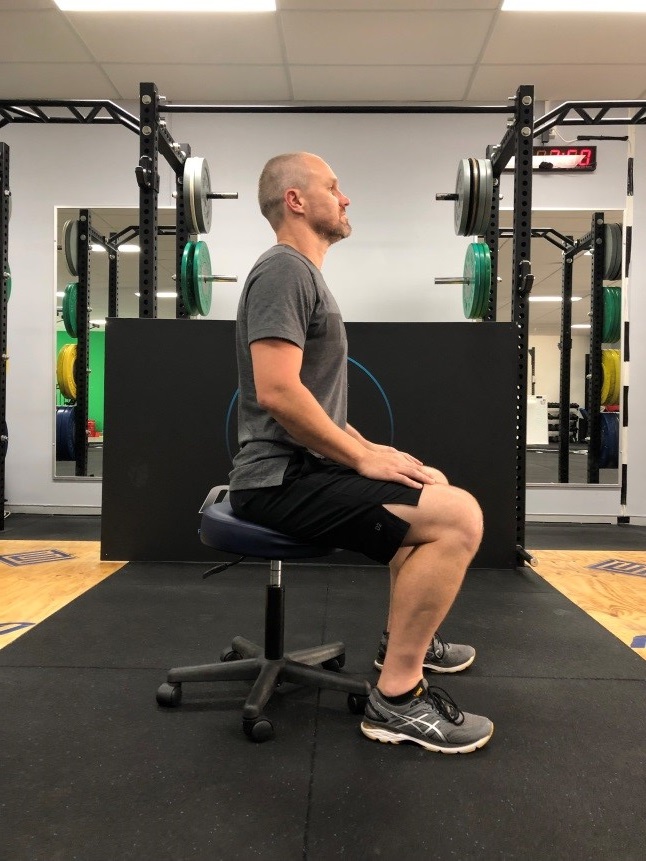
It can be as simple as that. By remembering and performing these three simple cues consistently throughout the day, postural issues can be avoided.
If you could give desk bound office workers one easy-to-remember piece of advice, what would it be?
Always remember to move around. If you have a day when you know you will be stuck at your desk, take regular breaks. Get up and walk around, make everyone in the office a cup of tea, drink lots of water so it forces you to get up and go the toilet. Every little bit of movement (pun definitely intended) helps to maintain joint mobility and proper postural alignment.
How can people maintain their posture while working a physically demanding job or living an active lifestyle?
If you have physically demanding duties at work, I’m sure there will be extended periods when you are sitting at home, or driving for long periods. We all need to be aware of how our body is positioned to avoid long term postural issues.
Here are four simple exercises you can use to help maintain a comfortable and ideal postural position.
Foam Roller or Rolled Up Towel.
When sitting we are sitting and we get a bit tired, lazy or unaware, we get in that dreaded slumped position which means our thoracic spine is in too much flexion. To counteract this, we can use the foam roller or rolled up towel to stretch our upper back into extension therefore making it easier to hold a solid postural position.
Simply lie over the roller/towel facing the ceiling and hold for 30 sec – 1 minute. Rolling off and repeating 2-3 times.
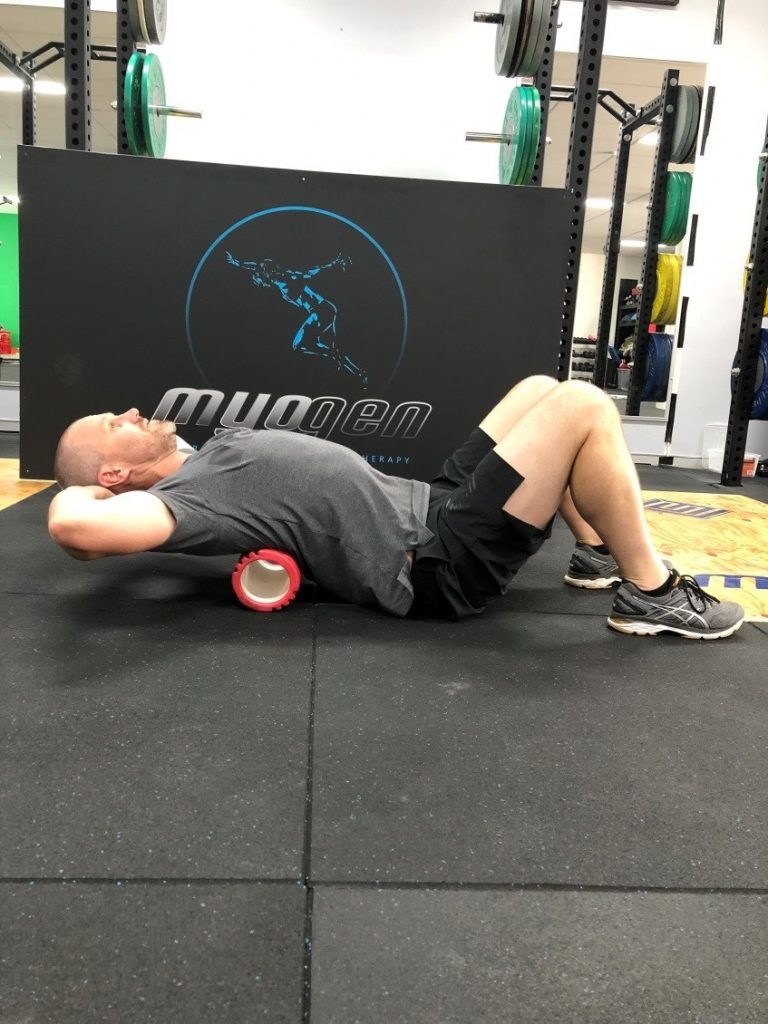
For a more intense stretch hold your arms above your head.
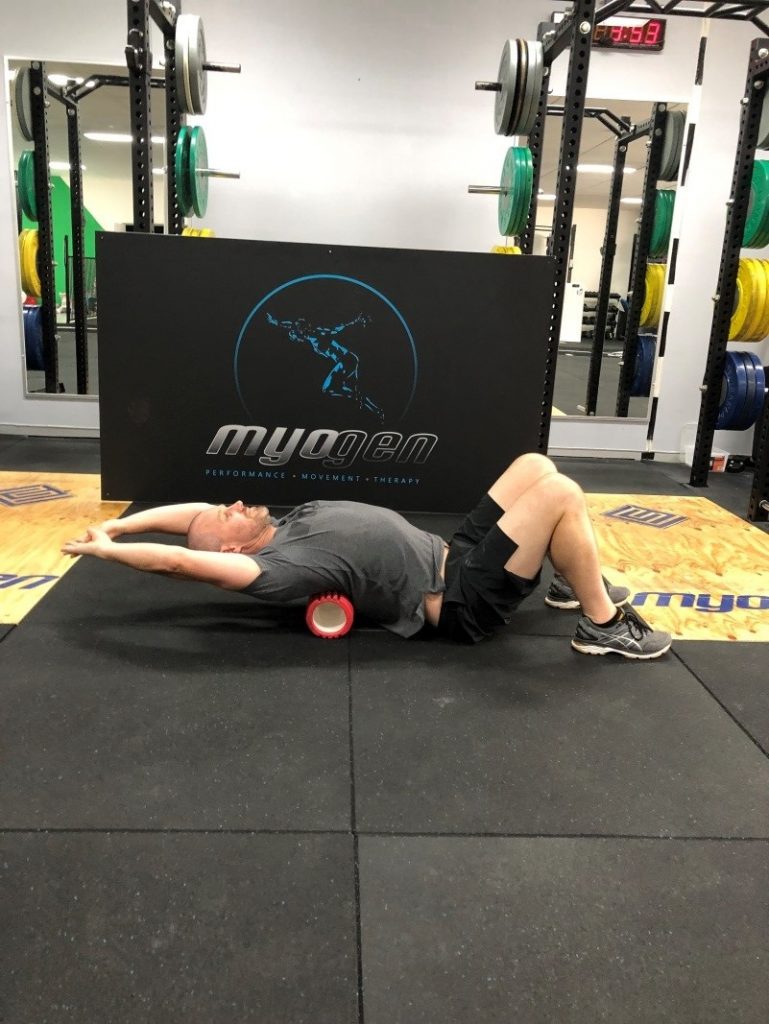
Pec Stretches to Open Up the Chest.
Tight chest muscles can exacerbate shoulder protraction (shoulders rolling forward) which can make it harder to maintain a good thoracic spine position. By simply stretching the chest against the wall or a doorway you can open the chest up and return your spine into a better position.
Three Levels of Pectoral Stretch
Upper
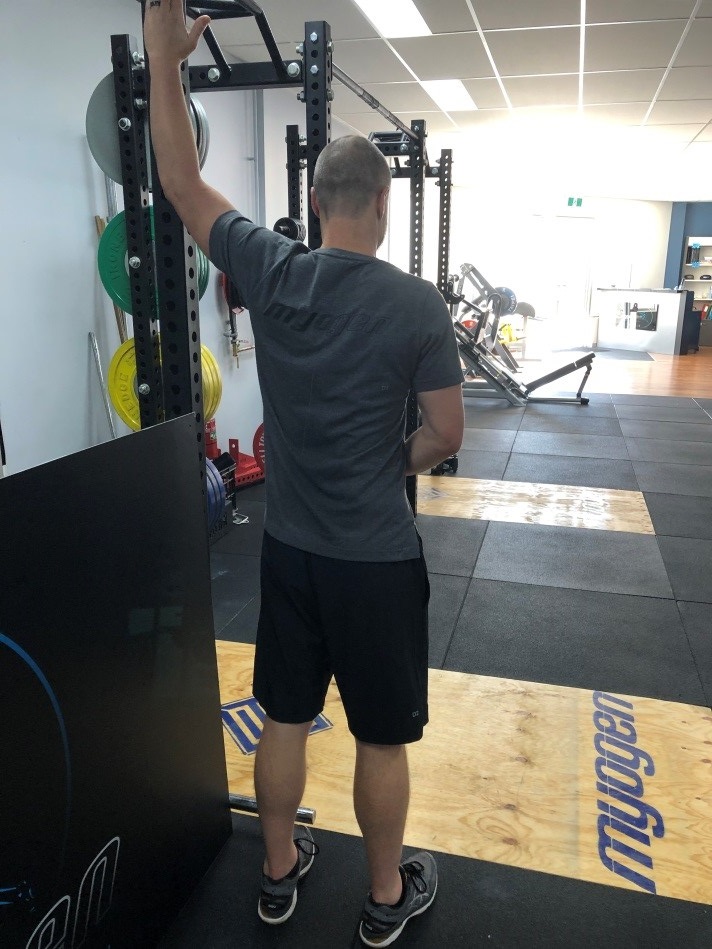
Middle
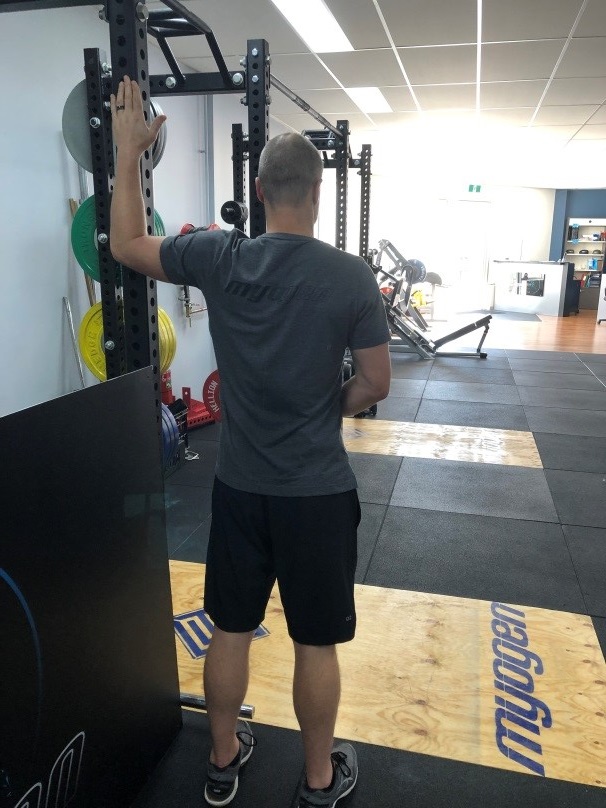
Lower
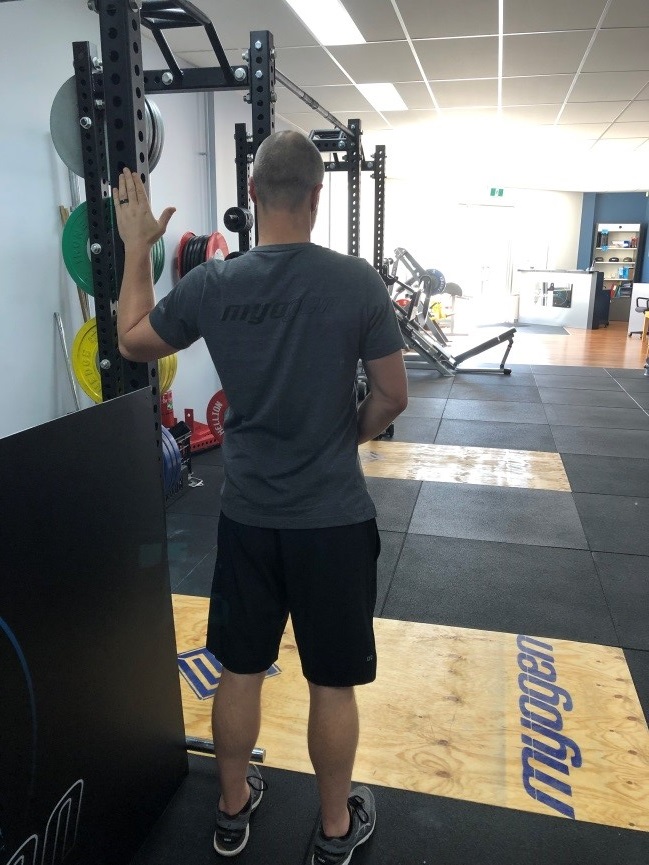
Self-massage for the Hips.
For those that stand for long periods it is more likely that you are going to suffer from stiffness through the hips and lower back. Using a dense ball to self-massage is a very effective way to ensure your base is functioning effectively.
If your hips are achy, or you find it hard to hold them in position, use a solid ball (tennis ball, baseball, or lacrosse ball) to self-massage and provide some release to the muscles around the hip. You can roll around on the ground but it can be impractical to lie around on the floor at the office.
A simple and effective way to get around this issue is to position the ball between yourself and the wall and work your way from the front of the hip all the wall round to the meaty part of the glutes. Find a tight spot; hold the ball there for 20-30 seconds. When you feel the muscle release, move on to the next spot and repeat.
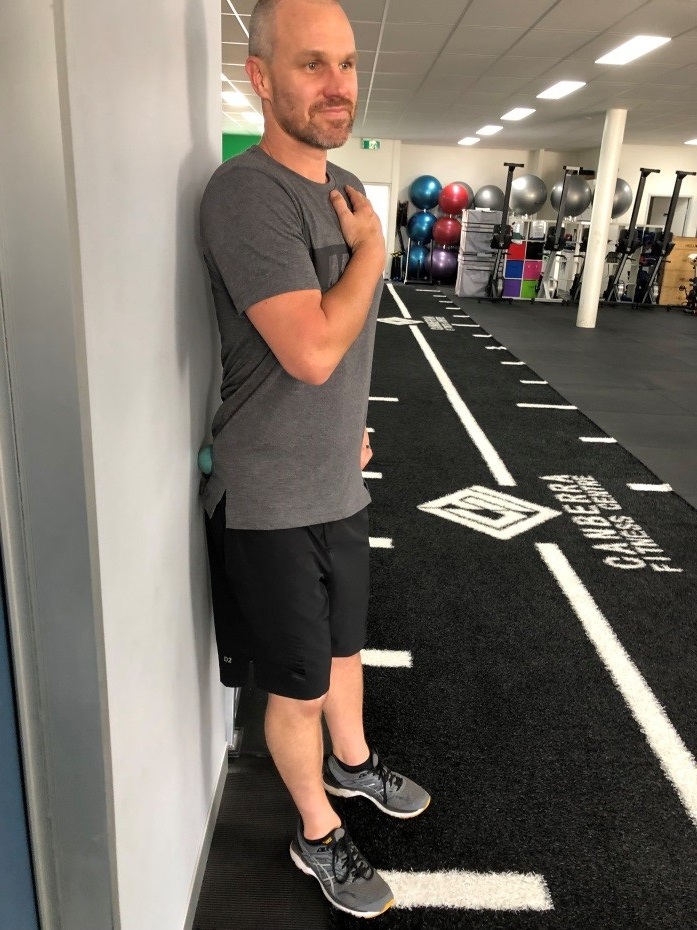
Hip Flexor Stretch.
The hip flexor stretch is extremely useful, as it helps to open up the hips after a long day of either sitting or standing. Create some space and get into a lunge position, placing your back knee on the ground and tucking your hips under your body. You should feel a concentrated pull in your lower abdomen into the upper thigh. Hold this for at least 15 seconds.
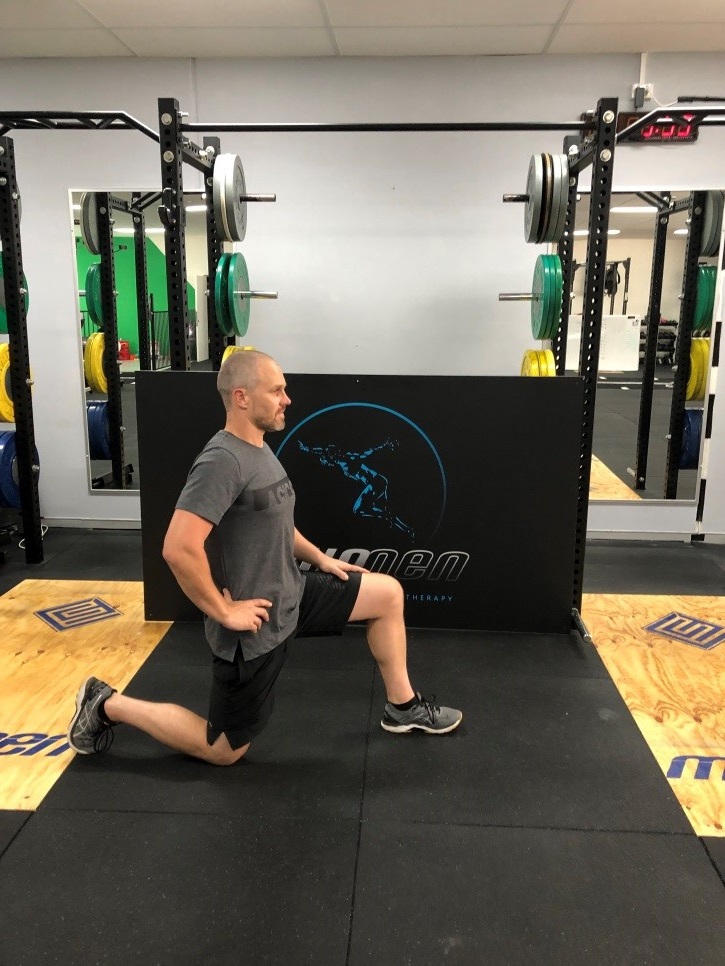
For a more dynamic approach, gently pulse your hips forward into the stretch.
Regardless of the physical demands your job may have, these four simple activities can help to improve your postural health. We like to get people into the habit of doing a combination of these exercises regularly, for short periods throughout the day.
You can be very effective with your stretching and self-massage in a three-minute window. Every little bit counts, and if you can chip away and prevent stiffness and discomfort throughout the day it is a lot more effective than trying to treat the symptoms when they arise.
Remember your number one priority is to MOVE. We are not built to be stagnant. Our joints rely on movement to lubricate and function efficiently and effectively. Think of it in terms of sitting in a car for three hours without a break. You can’t move around and you can’t stretch. Think of how it feels when you get out of the car and how stiff your major joints feel.
At work you have the luxury of moving around. So remember to take regular breaks from your desk when you can. Stretch, use self-massage and encourage your colleagues to sit with better posture. All it takes is to walk past a colleague who is slouching and ask them how their posture is going. They might adjust themselves, but it’s a great way to get them to remind you about your own posture!
Want to Find Out More?
If you have any questions regarding posture, movement or the treatment of postural conditions you can get in touch with one of the therapists at Myogen on 02 5105 4109 or by checking out their Facebook page.
As always, please let us know if there are any particular topics you would love us to look into or you have any queries or feedback.
